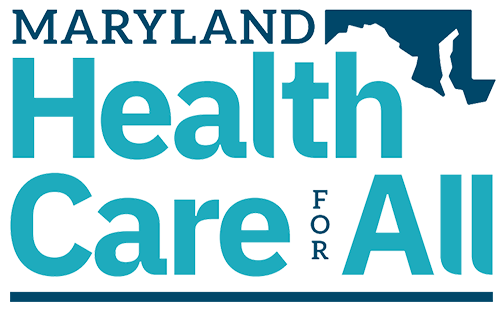| By Michael A Sawyers, Cumberland Times-News, Md. | |
| Tribune Content Agency |
April 18–CUMBERLAND — Dr. Wayne C. Spiggle, a physician of long standing in the Cumberland area, said he saw the impacts of the Affordable Care Act on the day it became law slightly more than five years ago.
“It immediately changed in a positive way the lives of patients I saw that day,” Spiggle said. “One had severe back pain deserving of attention and another was a diabetic who needed an insulin pump. Obamacare allowed us to have those patients seen by specialists.”
Spiggle works at Tri-State Community Health Center on Kelly Road where, he said, all patients are seen regardless of ability to pay.
“From there, we rely on Allegany Health Right to find specialists who will treat patients pro bono, but that isn’t always possible.”
Spiggle said the Cumberland area is a reflection of the nation in that about half of the previously uninsured now have coverage via Obamacare. “I applaud that,” he said. “But it is not the way to go to have the pharmaceutical and insurance companies in charge of our health care. It is an outrage that Medicare is not allowed to negotiate fair fees for medications in this country. That has to change.
“Even a small bill (for medical care or medicine) is impossible for many who are wondering how to feed their kids the next day.”
He’s covered now
The Henry J. Kaiser Family Foundation (kff.org) has in its mission statement this quote by President and CEO Drew Altman. “Since we began in 1991, our goal has been to build an institution that plays a special role as a trusted source of information in a health care world dominated by vested interests.”
KFF recognizes that the Affordable Care Act is unfolding in the middle of a political battlefield, that an individual’s decision-making about the plan can be influenced by his or her favorite partisan color, be it red or blue.
What Bill Smith of Cresaptown knows is that he did not have health insurance and now, because of Obamacare, he does.
“Even if someone thinks that Obama isn’t doing a good job of running the country, why would they turn down a plan that will improve their health and save them money?” he asks. “I mean, this help is available.”
Smith’s coverage began in January.
“It’s helped a lot; No. 1 with getting an expensive inhaler I need because I have COPD (chronic obstructive pulmonary disease),” he said. “And every six months I take the pulmonary function test that goes for about $300 and it costs me just$10.”
Smith said that had he not gotten coverage via Obamacare he would have had to quit his job to lower his income so he would be eligible for government assistance programs.
A couple of times since becoming covered, Smith has needed to go to the Western Maryland Regional Medical Center’s emergency department because of distressed breathing. “They took good care of me and the insurance coverage was great,” he said.
Local health system
The Western Maryland Health System’s change from volume-based health care to value-based health care fits well with Obamacare, according to President and CEOBarry P. Ronan.
Those concepts are usually defined in this manner.
A volume-based health care system pays by the volume of services provided to a patient. A value-based health care system pays based upon how well the services were performed and a positive patient outcome.
The thinking is that value-based health care providers will be more concerned with the quality of care that they are providing, rather than how many patients they are seeing or services they are providing.
“More than four years ago we took on the challenge of providing the most appropriate care at the most appropriate location,” Ronan said during an interview in March.
During that time, visits to the emergency department have decreased by 3,000.
“Someone with a sore throat or a fever can now be seen at our Center for Clinical Resources where they receive appropriate treatment at a lesser cost than if they had gone to the emergency department,” Ronan said.
The intent of the Affordable Care Act is to provide better health care that is cost effective and creates a more healthy community, according to Ronan.
Partly because more regional residents are now covered via Obamacare and are receiving health care on a regular basis, admissions at the Western Maryland Regional Medical Center are down 4,000 during the past four years.
“Our average daily census is about 155 patients, other than during flu season,” Ronan said. During fiscal 2011, the daily patient census averaged 196. The hospital is licensed for 250 beds.
“We are in touch with the architect of the hospital to take a look at how the space not being used to house patients can be repurposed,” Ronan added.
Because there are fewer admitted patients to care for, some nurses have received new assignments at the hospital. “No jobs have been eliminated,” Ronan said. “We have actually added positions.”
Ronan said all of Maryland’s hospitals have now adopted an approach to health care modeled after the WMHS. “All of the 5,000 or so hospitals in the country are evolving to our model,” he said.
Helping firms cope
CBIZ representatives such as Michael Marchini have been dealing with the Affordable Care Act from its inception as an inch-high document to its current status.
“There are 1,100 pages in the law,” Marchini said. “It is onerous.”
Marchini said the law is providing health care coverage to more people, but he agrees with local physician Spiggle that it is doing nothing to stymie the continuous rise of health care costs.
“Portions of the original bill that dealt with controlling costs were watered down in order for the bill to get enough votes to pass,” he said.
As an employee benefits consultant, Marchini works with large companies, helping them figure out the best affordable health care coverage for their employees. His cohort, Mandy Lauber, works with smaller firms. “All of these companies are doing the arithmetic, comparing the cost of providing health insurance to the cost of paying federal penalties for not providing it,” Marchini said.
“We’re seeing employers such as restaurants and hospitality providers limit some employees to 29 hours of work each week,” Lauber said. The federal government considers a worker to be full time at 30 hours per week.
Marchini said a worker whose employer’s health care coverage is not fully compliant with ACA has the option of enrolling in the government plan and receiving the federal subsidy toward premiums.
A worker whose company plan is compliant can choose Obamacare, but will not receive the subsidy.
“Some people whose company plans comply, but have high deductibles, high employee cost share and high co-pay are choosing the government plan,” Marchini said.
Lauber said some of her clients offer health care plans with a deductible of$3,500.
The individual tax penalty for not having health insurance coverage began at $95, increased to $300 for the 2015 tax year and will double to $600 for 2016, Lauber said.
This week, Gallup released poll findings show that the percentage of uninsured adults in the nation has decreased to 11.9. In late 2013 that percentage was 18.
The current rate is the lowest percentage since Gallup began tracking the figure in 2008. It was 15 percent then.
CNN reports that individuals earning less than $36,000 annually are experiencing the most significant rate of improved coverage. The uninsured in that income bracket has decreased from 30.7 percent in 2013 to 22 percent.
Choppy seas
Carol Morgan is a health care navigator for Healthy Howard and helps people in Allegany County register for coverage via ACA and other programs.
Navigator, it seems, is a more-than-appropriate title. Navigators help individuals travel through what can be a bewildering sea of acronyms, forms and programs to arrive safely at Port Health Insurance.
“Most people I register have never had health care coverage and neither do they have computers,” Morgan said. “Many of them find out about our assistance by word of mouth, by knowing somebody else who has registered. They are very happy to finally have health care.”
Morgan said the open enrollment period that was to have closed in February was extended until April 30 for those who just became aware that they owe a tax penalty. Call 855-288-3667 toll free to schedule an appointment.
Open enrollment for 2016 is scheduled for Nov. 1, 2015, through Jan. 31, 2016.
Public schools
The Allegany County Public Schools system paid $150,000 in additional fees during the past year because of health care reform, according to Public Information Officer Mia Cross.
The bulk of that amount was in the form of transitional re-insurance fees, which is an amount per covered employee that eventually makes its way to insurers to cover high-cost individuals. Another fee went to the Patient Centered Outcomes Research Trust, which attempts to advance the quality and relevance of evidence-based medicine, according to the IRS.
The school system has not eliminated jobs, shortened hours or outsourced work in response to costs associated with health care reform, according to Cross.
Michael Sawyers
___
(c)2015 the Cumberland Times News (Cumberland, Md.)
Last modified: April 24, 2015



